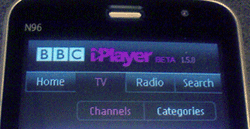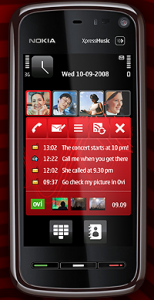 No matter what you think of “Saturday Night Live,” NBC’s late-night comedy program deserves its own dedicated Web site.
No matter what you think of “Saturday Night Live,” NBC’s late-night comedy program deserves its own dedicated Web site.
Comedy Central has given Web sites to “The Daily Show With Jon Stewart” and “South Park,” so why shouldn’t one of the longest-running, seminal TV shows have its own dedicated site?
“Saturday Night Live” head writer Seth Meyers said in a podcast with ESPN’s Bill Simmons late last week that NBC was working on an “SNL” site. Meyers said plans for the site have gained momentum with the recent success of the hilarious Tina Fey-Sarah Palin clips on Hulu and NBC.com. [See Broadcasting & Cable report.]
Among ideas being discussed, Meyers said the site would include a mix of sketches from the “SNL” library and dress rehearsals that never aired. The site might also feature original comedy, cast member Web pages, their “Top 10” sketches of all time, as well as the favorite moments from that week’s guest host.
During a hotly contested political race, like the one Barack Obama and John McCain are currently embroiled in, it makes sense for “SNL” to have its own Web site. But what about non-political seasons? As Rafat Ali notes at paidContent.org, “My two cents: SNL beyond the election skits still sucks, so stick to the knitting, don’t get into the rights-clearing quagmire, and keep pushing on Hulu and NBC.com.”
I agree that “SNL” has sucked for many, many years, but that doesn’t necessarily mean it shouldn’t have its own dedicated site — especially in light of the success of “The Daily Show” and “South Park.”
Continue reading »
 It’s no secret that I’m a huge fan of the BBC’s TV catch-up service iPlayer (UK-only), which I regularly access on my laptop, cable television set-top box, and of course
It’s no secret that I’m a huge fan of the BBC’s TV catch-up service iPlayer (UK-only), which I regularly access on my laptop, cable television set-top box, and of course 

 After a month-long hiatus, I made a return appearance on ReadWriteTalk’s fortnightly podcast RWW Live hosted by Sean Ammirati. In this
After a month-long hiatus, I made a return appearance on ReadWriteTalk’s fortnightly podcast RWW Live hosted by Sean Ammirati. In this 

 At long last, Nokia has taken the wraps off its
At long last, Nokia has taken the wraps off its 